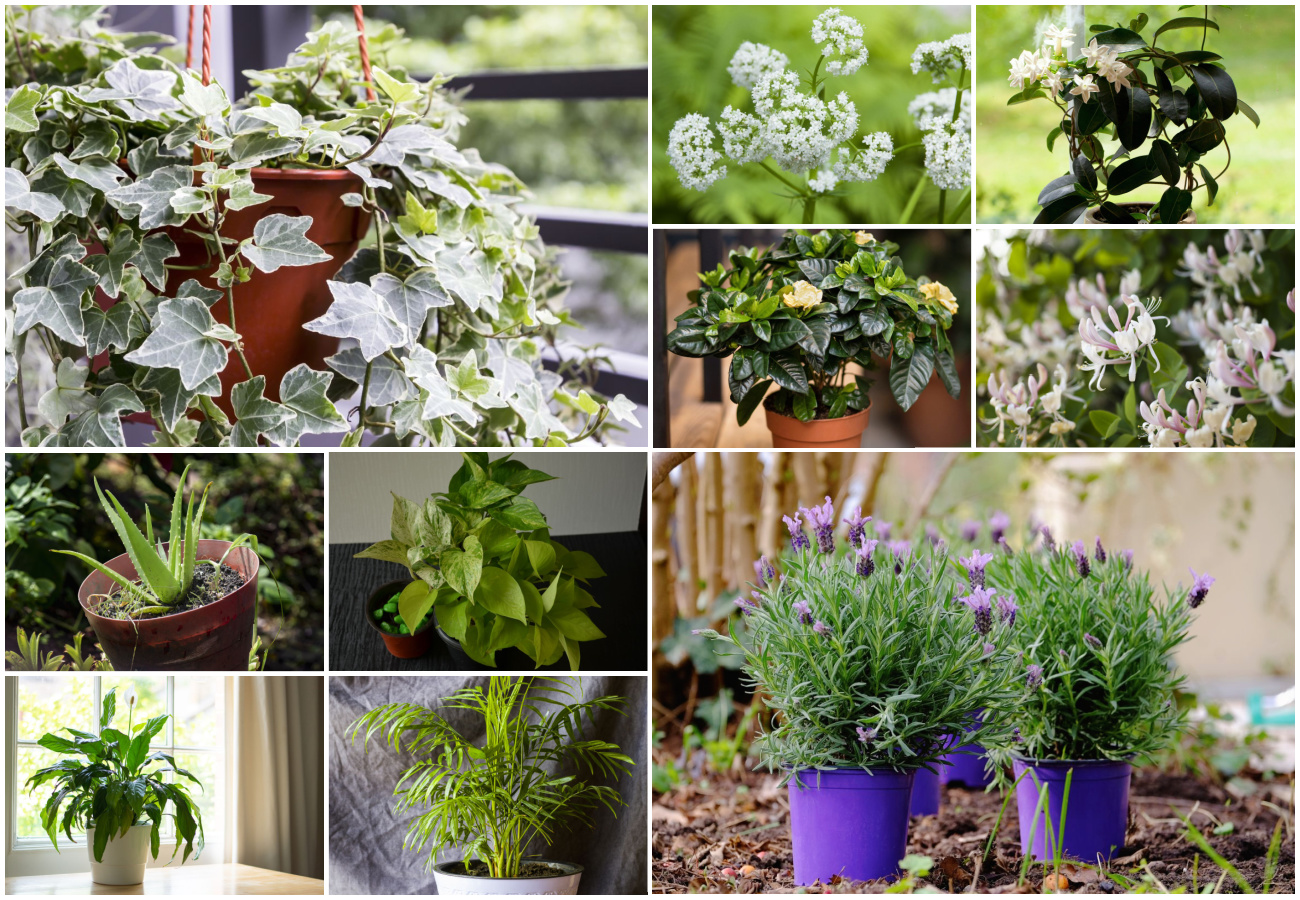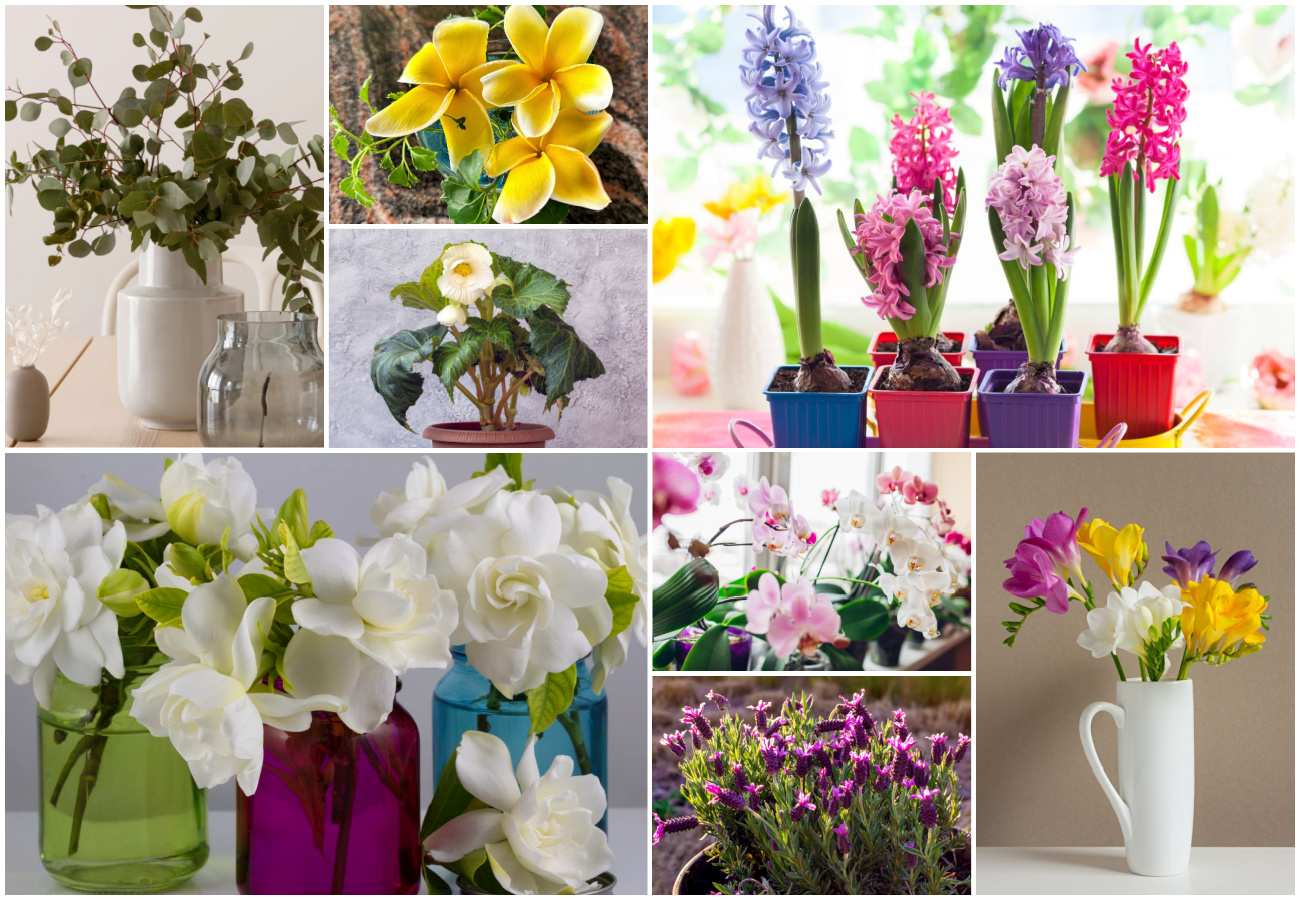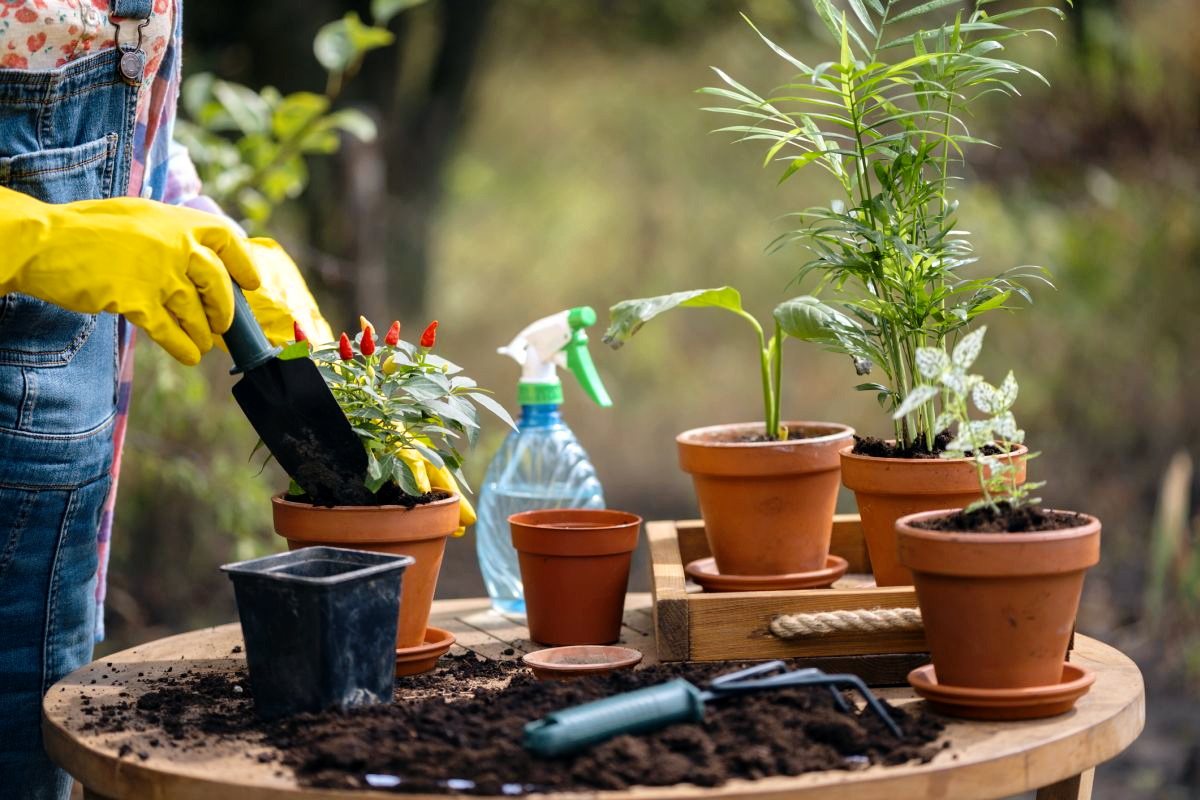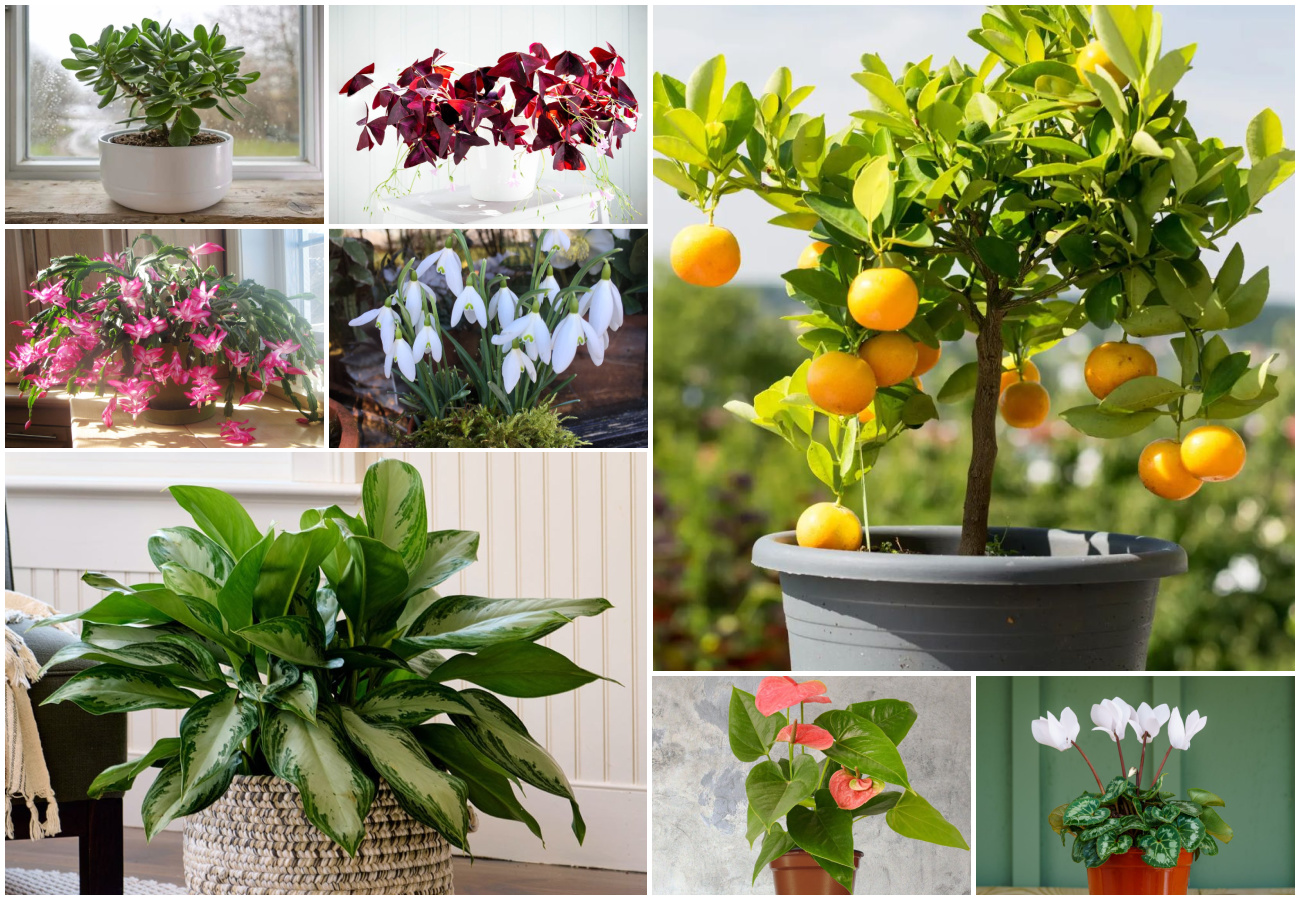The African Milk Tree, Euphorbia trigona, is native to South American and also grows in the Mediterranean. It has a rapid growth rate and is used as a hedge when grown outdoors in suitable climates. When grown as a houseplant it makes an impression with its size and typical cactus appearance.

African Milk Tree Appearance
While actually a succulent plant, The African Milk Tree’s appearance resembles the typical desert cactus. The plant also looks similar to the Candelabra Tree. The euphorbia cactus grows 1 to 2 feet (30 to 60 cm) per year outdoors and will reach a mature height of 9 feet (2.7 meters). When grown indoors the growth rate and mature height is halved. The African Milk plant features triangular stems with three distinct sides. Each side is separated by raised ridges growing teardrop-shaped and spiny thorns.
African Milk Tree Light Requirements
Place the plant in bright, indirect light from a south-facing window for optimal growth. Full sun exposure is tolerated when the heat is not extreme but the plant will require more water. In most climates, all-day, direct sunlight during summer will damage the leaves and plant’s surface.
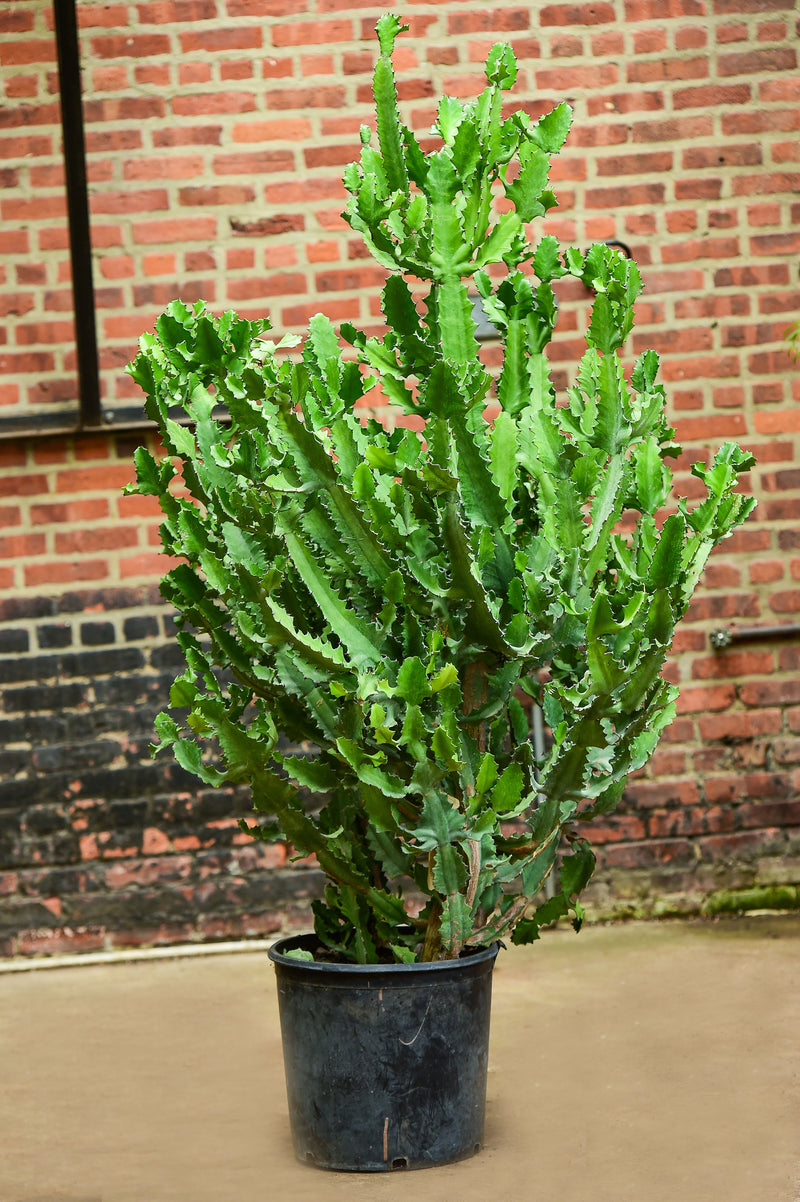
Water Needs
Water the African Milk Tree once per week in the spring and summer. Allow the water to flow to the roots of the plant, but do not let the soil become soggy. Let the soil dry out between waterings to ensure the euphorbia cactus is not overwatered. Limit watering to once per month in the fall and winter during the plant’s dormancy period.
Temperature and Humidity
The African Milk Tree is drought tolerant and is able to store water in its stems. The plant prefers a warm, dry climate with temperatures above 55 degrees Fahrenheit (13 degrees Celsius). Do not provide extra humidity as it leaves the African Milk plant vulnerable to pests and disease. If indoor humidity becomes high, use a dehumidifier to correct the issue.
Soil and Fertilizer
Grow the euphorbia cactus in a well-draining soil mixture of two parts potting soil, two parts perlite or coarse sand, and one part peat moss. A soil for succulents or cacti is also suitable. Keep the soil’s pH level between 6.1 and 7.8 for optimal health. Fertilize once per month, in the spring and summer, using a water-soluble fertilizer diluted to half strength.
African Milk Tree Propagation
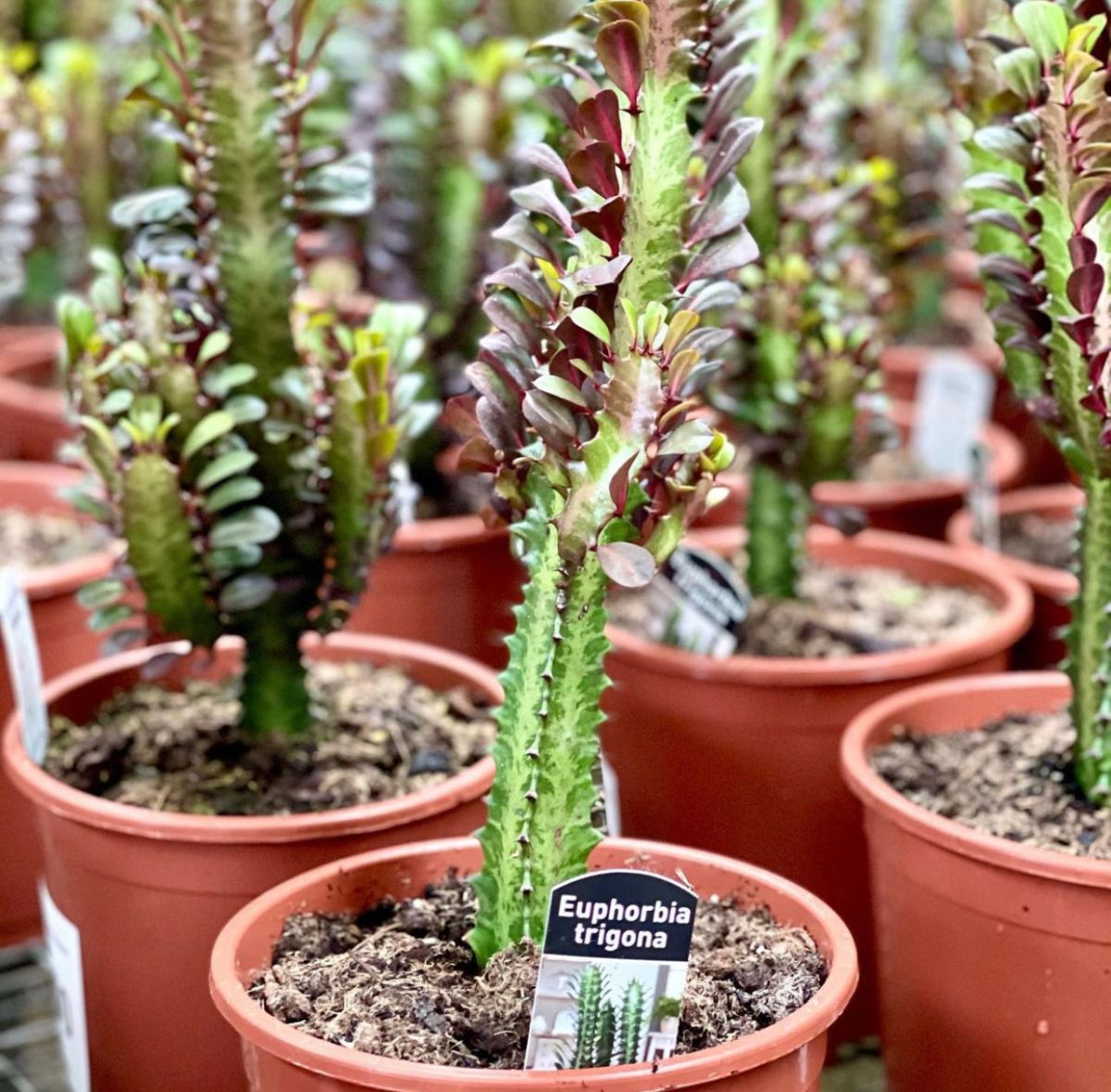
Propagate your African Milk plant by cutting for the best results. Always wear heavy gloves and eye protection to avoid injury from the milky sap that is both toxic and a severe irritant. Use a sharp and sterilized knife to cut an arm of the plant off where the base meets the main stem. Rinse the cut end under cold water until the toxic sap stops oozing from the cut. Immediately clean up any drips or spills of the sap with soap and water.
Place the cutting on a paper towel, out of the reach of children or pets, and allow it to rest for five to seven days. A callus will form over the cut end. Plant the cutting by inserting the cut end into a pot filled with a succulent or cacti soil mixture. Place a layer of fine gravel over the soil’s surface for stability. Set the pot in indirect sunlight with temperatures between 65 and 75 degrees Fahrenheit. Roots will grow within two months.
African Milk Tree Pests and Disease
Mealybugs are one of the few pests the euphorbia cactus is susceptible to. Remove the pests by dampening a paper towel with rubbing alcohol and wiping away the insects. Always wear gloves when handling this plant to protect yourself from the spines and toxic sap. If the plant is outdoors, spraying the plant with a garden hose works also.
Root rot is caused by improper watering habits of your African Milk Tree. To correct root rot, allow the soil to dry out and pour a mixture of one part 3 % hydrogen peroxide and two parts water into the soil. This will kill the bacteria causing the rot. Decrease waterings to avoid future issues.
The African Milk Tree is one of the larger cactus-like houseplants to add to your collection. While impressive to look at, it should always be noted that its toxic sap and large thorns make it a hazard for homes with small children or pets. If caution is used, it makes an impressive and easy-to-care-for addition.
African Milk Tree FAQ
Varieties of the African Milk plant include Rubra and Royal Red. Both plants feature bright-red accents on their stems late in the growing season.
Yes, it cannot be stressed enough that the sap from this plant is both highly toxic and a severe irritant. Always wear gloves and eye protection when handling this plant and keep it away from pets and small children.
It is rare for the plant to produce blooms when grown indoors. If the plant does bloom, the flowers are small and typically white.
Due to its shallow root system, the euphorbia cactus is prone to toppling when it becomes too large for its pot. If repotting is not an option, prune excess height and width to decrease the weight. Always wear gloves and protective eye gear to avoid harm from the toxic sap. Keep pets and children away from the plant, especially before the cuts callous over.
No, fertilizer is only needed for the spring and summer growth months. Withhold feedings in the fall and winter to allow the plant to go dormant and rest.

